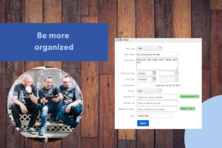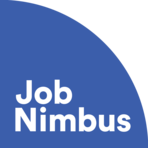Construction projects can be among the most complex project types out there. Managing the full lifecycle of construction projects, its resources, suppliers, input materials, inspections, and other important aspects, requires efficient organization and skilled project management.
Project managers in the construction industry have a variety of responsibilities in helping guide a project through its entire lifecycle. This usually includes managing subcontractors, planning project deliverables, developing work schedules that cover multiple sites, monitoring building progress and quality, and ensuring health and safety compliance. Furthermore, continuous monitoring of progress and adaptation is usually critical.
Project management software has become increasingly popular in recent years. These solutions help users stay on top of the countless aspects of construction projects in a timely manner. Many repetitive processes can be automated, enabling project managers to focus less on administration and more on the project at hand.

 JobNimbus is a powerful and flexible construction project management solution. It offers a vast selection of features specific to the needs of the construction industry.
JobNimbus is a powerful and flexible construction project management solution. It offers a vast selection of features specific to the needs of the construction industry.
The main goal of construction project management software is to streamline the everyday processes of project managers. These solutions come equipped with a range of features to help each stage of a construction project’s lifecycle, from the initial blueprints to estimating costs and monitoring progress.
Standard project management solutions generally include features such as project scheduling, project tracking, task management, time tracking, and accounting. They often also provide visual monitoring tools such as Gantt charts or Kanban boards.
However, construction project management software tends to support a range of features specific to the needs of the construction industry that are not usually found in more general project management software suites. This enables these solutions to better meet the needs of businesses in the construction industry.
This is where it can be important to think about whether you need a single fully-fledged solution or whether standalone solutions would be more appropriate. Despite generally being cheaper and simpler to use, it is vital to check what integrations standalone solutions support to ensure greater operational efficiency.
One of the most commonly demanded construction management features are cost estimating (also referred to as job costing). Cost estimating functionality enables businesses or contractors to calculate the material, labor, and equipment requirements of a project. These requirements can then be backed by benchmarking analytics to ensure reliability and enable businesses to deliver higher value bid proposals.
Furthermore, solutions offering cost estimation can also allow users to generate and send purchase orders, schedule / track payments and invoices, accept change orders, and submit / approve time sheets.
Many solutions offering cost estimating will also provide resource planning (ERP) and accounting capabilities or integrations. This enables users to perform all budgeting and financial tracking processes within the same digital environment. As such, they can easily further verify that accurate estimates are delivered.
Construction project management software offering the ability to measure takeoff enables users to easily appraise their blueprints and similar digital plans. This enables users to determine the exact quality and volume of materials that will be required to complete a project, as well as for the individual tasks associated with it.
It can be good to think about using a solution that groups takeoff with estimating. This is because measuring takeoff and estimating costs are related to pre-sales processes that rely on similar data. Another option is to opt for a standalone takeoff measuring and cost estimating solution, although it is important to check how well it integrates with complementary solutions.
One of the most common features of construction project management software is bid management functionality. Bid management enables users to receive job prospects as well as solicit and procure bids from subcontractors. The best bids can then be automatically compiled to produce a quote for the project. As such, the whole process becomes much more streamlined.
It can be easy when managing construction projects with lots of individual components for the various digital plans and data models to become unorganized. This is especially the case for businesses that still manage physical documents and storage. Construction project management software can ease this administrative burden by providing document management functionality.
Document management enables users to electronically process and store documents online. This means that the stored documents can be accessed from anywhere with an internet connection. As such, this feature is very useful for construction projects that include multiple collaborators or locations.
Access permissions is another feature that can be useful for blueprint and digital plan management. It allows project managers to set rules governing what team members or clients may access or edit. This is especially useful when important documents are stored in a centralized location that a variety of people can access.
Construction projects are often spread across various physical locations and include many different team members. As such, many construction project management solutions provide field management capabilities. This enables project managers to more easily generate and distribute work plans, communicate with team members, and receive reports based on team member activity.
Many construction projects can be subject to a shortage of resources, particularly regarding labor. Construction project management software providing resource management data analytics helps users monitor all resources associated with a project. They can also be automatically notified of any potential shortages. This helps prevent delays from happening and requires no extra effort from project managers.
Many construction project management solutions also offer inventory management functionality. While similar to resource management, inventory management mainly focuses on the current inventory of a business. For a construction company, inventory management enables project managers to easily handle equipment, building materials, and transportation requirements. Resource management, on the other hand, is more focused on forecasting and analytics.
Additionally, these solutions can generate insights into employee productivity and how assets are being utilized.
Maintenance management (service management) and asset tracking capabilities are also commonly bundled with construction project management software. These features enable users to easily monitor the condition of all the assets relating to a project. Project managers can be automatically notified when an asset requires maintenance and work orders can be automatically generated.
Workload automation in a construction project management software context refers to the ability to easily schedule jobs for completion. This primarily includes the ordering of tasks, resource allocation, and the ability to communicate scheduled jobs to all affected parties.